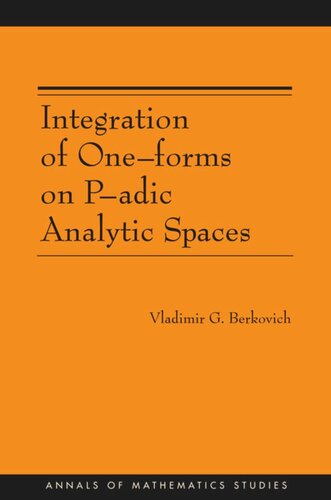

Most ebook files are in PDF format, so you can easily read them using various software such as Foxit Reader or directly on the Google Chrome browser.
Some ebook files are released by publishers in other formats such as .awz, .mobi, .epub, .fb2, etc. You may need to install specific software to read these formats on mobile/PC, such as Calibre.
Please read the tutorial at this link: https://ebookbell.com/faq
We offer FREE conversion to the popular formats you request; however, this may take some time. Therefore, right after payment, please email us, and we will try to provide the service as quickly as possible.
For some exceptional file formats or broken links (if any), please refrain from opening any disputes. Instead, email us first, and we will try to assist within a maximum of 6 hours.
EbookBell Team

4.0
36 reviewsAmong the many differences between classical and p-adic objects, those related to differential equations occupy a special place. For example, a closed p-adic analytic one-form defined on a simply-connected domain does not necessarily have a primitive in the class of analytic functions. In the early 1980s, Robert Coleman discovered a way to construct primitives of analytic one-forms on certain smooth p-adic analytic curves in a bigger class of functions. Since then, there have been several attempts to generalize his ideas to smooth p-adic analytic spaces of higher dimension, but the spaces considered were invariably associated with algebraic varieties.
This book aims to show that every smooth p-adic analytic space is provided with a sheaf of functions that includes all analytic ones and satisfies a uniqueness property. It also contains local primitives of all closed one-forms with coefficients in the sheaf that, in the case considered by Coleman, coincide with those he constructed. In consequence, one constructs a parallel transport of local solutions of a unipotent differential equation and an integral of a closed one-form along a path so that both depend nontrivially on the homotopy class of the path.
Both the author's previous results on geometric properties of smooth p-adic analytic spaces and the theory of isocrystals are further developed in this book, which is aimed at graduate students and mathematicians working in the areas of non-Archimedean analytic geometry, number theory, and algebraic geometry.